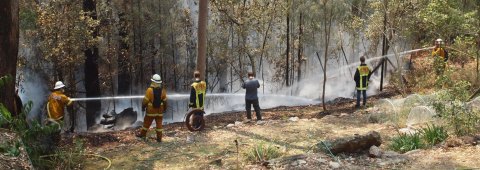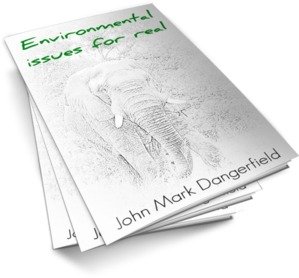Home | About CCW | Contact Us | Climate change Meaning | Causes | Solutions | Emissions | Carbon trading
Drought
Drought is a word meaning that from our human perspective there is an extended period of below average rainfall within a region.
The reason we have a specific word for times when the supply of water is below our needs is just that. Times when not enough water is available for crops, livestock and ourselves, is worth a name.
Such times are painful and potentially disasterous, we need to be wary of them and change our activities from times when water is plentiful.
The consequences of inadequate water supply are significant.
Drought effects include:
- lower crop production or crop failures
- reduced carrying capacity of rangelands and pastures for livestock
- habitat change
- increasing frequency and severity of wild fire
- malnutrition and in extremes, famine
- human migration
- human conflict
Where power comes from hydro-electricity drought can also have effects across the economy.
Dry times can also increase the severity of wild fires are especially significant in already dry areas such as Australia, California and parts of Europe. In droughts that follow wet periods there is sufficient fuel load that becomes highly flammable and fires can become devastating across wide areas.

Firefighters pushing back a wildfire that took out our back fence in the Australian bushfires in October 2013
Climate change will have an affect where, when, and how severe dry times will be in the future. It will also intensify the problem of desertification However, it will be hard to make direct attribution of climate change effect as the reason for dry times.
Statements such as
this dry spell is a result of climate change
will be hard to justify because there are several confounding factors.
Water resources are already under stress. Even without climate change effects there would be difficulties in maintaining water supplies from growing demand and the ways we manage the resource.
Stresses already come from:
- population growth and concentration into cities
- inefficient use including outmoded infrastructure in irrigation and domestic supply
- limited water recycling
- claims on water for environmental use
- degraded water quality from poorly regulated industry and concentrations of people into urban centres
- over reliance on groundwater
- inflexible mechanisms for regulation, sharing and allocation of water use
It will be tempting to blame water shortage on climate change but this list suggests that there may be more to it.
Drought will continue to be a dirty word unless some of these issues are resolved.

Consequences
Periods of time with below average precipitation are inevitable, natural and part of the evolution process.
Nature will absorb these events with responses that slow ecosystems just as wet periods speed things up.
Landscapes modified by and for humans are less flexible. They are designed in an attempt to produce constant, reliable production.
In the US dry period from 1987 to 1989 resulted in financial losses of $39 billion, more than the GDP of a small country.
This is typical for any impact that reduces primary production. The human consequences are are acute in rural economics. More so for the 3 billion or so people who grow most of their own food.
What can be done?
The way to deal with water shortages in a time of climate change is to pay close attention to how we use and manage existing water supply.
Give flexibly and resilience to our systems of water use.
So, it would be wise to invest to...
- upgrade infrastructure for water distribution
- install water efficient irrigation
- recycle, recycle, recycle
- innovate wherever it is possible
- upgrade the bureaucratic approach we take to water management
Imagine if we all used grey water to flush toilets or perhaps in coastal cities when folk flushed their toilets seawater went down the bowl.
Or it was compulsory for every new house to have a rainwater tank built into the foundations.
Or drip irrigation infrastructure was subsidized from a water levy These things will happen because water is a basic need.
Just because in the west we are used to turning on the tap, forgetting what goes into supplying the water that comes out of it.
We will remember in time to ensure supply.
And then... Make landscapes more resilient
This is about keeping a landscape as close to a natural makeup as possible.
Avoid creating vast tracts of cleared country.
Maintaining soil quality.
Capturing water in the landscape, not in dams but as soil moisture that seeps to feed rivers and groundwater.
More reading from CCW
Environmental Issues for Real by Dr J. Mark Dangerfield looks at some of the obvious, and some of the not so obvious, challenges for a growing human population living as we do in a finite world.
Only this time it's not about the impending disasters or the guilt or the blame.
This time, it’s 10 brief essays that are about the bigger picture. In less than an hour you could glimpse something different, a view that we can only see when we take a fresh look.
Download your copy at Smashwords
Back to top of drought | Return from Drought to Climate change effects | Back to Climate-change-wisdom home page
Recent Articles
-
Reducing emissions while looking for solutions...
Nov 01, 15 04:46 PM
I've seen a lot of post's online for ideas on reducing emissions. The one suggestion I have not seen, is the most obvious. There should be a government -
Climate change evidence
Mar 24, 15 06:22 AM
Real climate change evidence has to demonstrate a change in climate. An extra sunny day or a severe storm or a flood is not enough. -
The climate change effect
Feb 19, 15 03:08 AM
What will be the climate change effect? There isn't one, there are many. Perhaps too many for us to understand.


New! Comments
Have your say about what you just read! Leave me a comment in the box below.